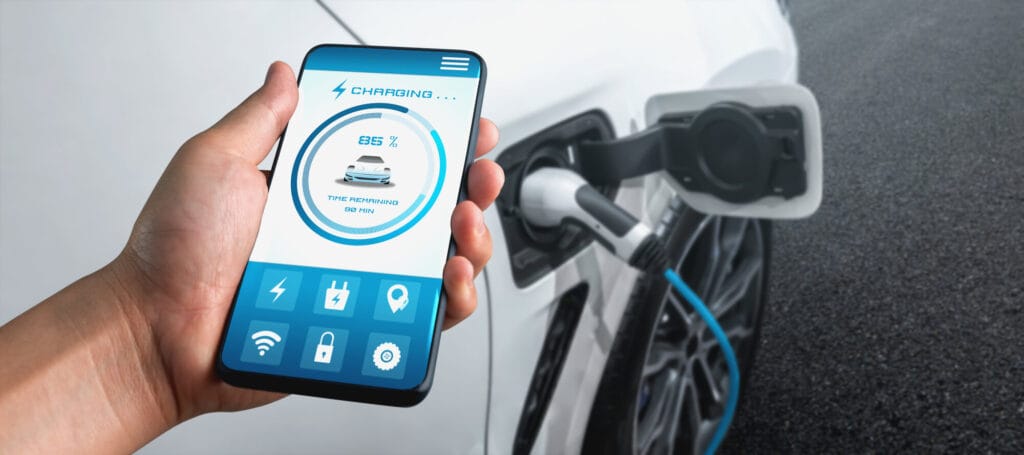Need an Electrician?
Captain Cook Electrical
– A Pleasure To Deal With
» The Captain’s Journal – Electrical Blog » What Are The Dangers of Overcharging Lithium Batteries?
Captain Cook Electrical
– A Pleasure To Deal With
In an era where technology reigns supreme and our commitment to eco-friendly living has never been stronger, lithium-ion batteries emerge as the unsung heroes quietly shaping our daily lives. These unassuming power sources serve as the backbone for our cherished smartphones and laptops, ensuring they stay powered throughout our busy days. Simultaneously, they power the eco-conscious electric vehicles zooming down our highways and store renewable energy to light up our homes and workplaces, creating a world marked by both sustainability and unmatched convenience.
However, beneath their sleek, unobtrusive exteriors lies a critical concern that deserves our attention: the potential risks of overcharging. As we embrace an electrified future, where green technologies are swiftly supplanting their traditional counterparts, it’s crucial to recognise the vulnerabilities within lithium-ion batteries that underpin our aspirations for a more sustainable tomorrow.


Before we delve into the more intricate aspects of lithium-ion batteries, it’s essential to grasp and appreciate just how widespread their use is, and their incredible adaptability. These unassuming yet indispensable energy storage devices are so ingrained in our lives that you can even spot them in your pocket, nestled within your trusty smartphone, working tirelessly to ensure you remain connected and productive throughout the day. Beyond that, they are the silent champions powering the cordless tools you rely on for your DIY projects, enabling your creativity to flow unhindered, but also in electric vehicles where it can be argued their effect on the green revolution is most profound.
In recent years, these compact marvels have heralded a remarkable transformation in the way we go about our daily lives, commute, and manage our energy consumption. The sheer impact of this technology is awe-inspiring, touching various facets of our existence, from reshaping how we power our homes to redefining the transportation industry, making our world more environmentally conscious and efficient. Let’s explore how lithium-ion batteries are propelling us towards a greener, brighter future.
Lithium-ion batteries are indeed pivotal in steering our world toward a more sustainable and eco-friendly future, with a profound impact evident in two key domains: vehicles and storage.
The advent of electric vehicles (EVs) represents one of the most remarkable developments in recent years, and lithium-ion batteries are the linchpin of this environmentally conscious voyage. Electric cars, with their sleek, futuristic designs (think Tesla or Rivian) and the allure of zero tailpipe emissions, are transforming the very notion of transportation. Lithium-ion batteries bring forth the energy density and reliability required for extended, emissions-free journeys. Whether you’re navigating the bustling streets of a metropolis or embarking on a cross-country road trip, these batteries offer the assurance of reaching your destination without leaving a carbon footprint. They provide not only clean and efficient mobility but also pave the road for a future where sustainability and performance go hand in hand. Who said you can’t save the planet while looking cool?
Lithium batteries are also great for storage. Australia’s diverse landscapes are blessed with an abundance of natural energy resources, ranging from the scorching outback sun to the brisk coastal winds that sweep across the shorelines. Solar panels and wind turbines efficiently capture these energies, presenting an environmentally friendly alternative to traditional power sources. However, one challenge remains ever-present: the intermittent nature of these resources and their supply, which can be as unpredictable as the changing winds themselves.
Enter lithium-ion batteries, the elegant solution to this puzzle. They act as the ultimate enablers for renewable energy. These batteries store the surplus energy generated during sunny days and wind-filled spells, only to release it when the sun sets, or the winds die down, ensuring a consistent power supply for your home. This ingenious innovation has significantly enhanced the reliability and accessibility of renewable energy, thereby setting the stage for a cleaner and more sustainable energy future, by empowering us to store energy more effectively. With lithium-ion batteries at the core, we are better equipped to utilise and deliver energy, reducing our carbon footprint and embracing a more environmentally responsible way of living.


Many of you will be aware that with new technology comes new challenges and dangers – lithium batteries are no exception. Recent news headlines have been awash with alarming accounts of lithium battery fires, often stemming from the issue of overcharging.
Arguably the most nightmarish outcome of overcharging is the phenomenon known as thermal runaway. This terrifying event unfolds when a battery’s internal temperature soars uncontrollably due to excessive charging, and in the worst-case scenario, it can culminate in a violent explosion or a raging fire. The gravity of the risks here cannot be overstated, and the consequences can be nothing short of catastrophic.
Though perhaps less dramatic than thermal runaway, overcharging is a stealthy adversary that quietly chips away at a battery’s lifespan. The relentless stress imposed by overcharging can lead to premature aging, which, in turn, necessitates more frequent battery replacements. This, unfortunately, not only contributes to the environmental burden but also incurs additional costs for those relying on these batteries.
Now if your electric vehicle succumbs to a thermal runaway incident, it would be incredibly expensive to fix and is a mistake that could very easily have been avoided by following some best-practice advice. To get a clearer understanding of battery safety and the preventative measures to adopt, I recommend checking out the Fire + Rescue Battery and Charging Safety page. This comprehensive resource offers invaluable insights to keep your devices and vehicles safe.


Mitigating the risks associated with overcharging your electric vehicle is both feasible and essential. Let’s delve into some of the most effective practices that empower you to harness the full potential of these potent batteries while safeguarding against potential hazards:
When you’re setting up a home charging station for your electric vehicle, it’s recommended to consult professionals to ensure the station is setup correctly and all hazards are accounted for. Their expertise and experience are invaluable in ensuring a secure and efficient charging process. Beyond just safety, professional installation also contributes to prolonging the life of your battery.
Modern electric vehicles are equipped with cutting-edge battery management systems, offering valuable insights into the charging process. It’s crucial to heed their recommendations during charging. Equally important is using chargers specifically designed for your vehicle, as they come equipped with the essential safety features that effectively prevent overcharging.
Many charging stations offer the flexibility to establish specific charging times and limits. Utilise these features to ward off the dangers of overcharging. By programming your electric vehicle to charge during off-peak hours, you not only enjoy cost savings but also reduce the strain on the grid, making a meaningful contribution to a more sustainable energy future.
Investing in a smart charger for your electric vehicle is a wise move. These chargers establish a line of communication with your vehicle’s battery management system, ensuring that the battery charges optimally and ceases charging once it reaches its capacity. This dual action not only averts overcharging but also extends the lifespan of your battery, ensuring you derive maximum value from your electric vehicle.
Lithium-ion batteries power our electric vehicles and other devices because they are remarkable at storing renewable energy. They are therefore an invaluable ingredient in our collective drive for a greener society.
However, it’s essential to acknowledge the potential risks associated with overcharging these batteries. Recent headlines have highlighted concerns, ranging from explosive thermal runaway incidents to premature battery aging. To harness the benefits of lithium-ion batteries while minimising these risks, consulting professionals, such as those at Captain Cook Electrical, is vital.
Important: If you need an electrical job completed quickly, please phone us on 1300 669 135 24 hours a day and talk to one of our staff. If you fill the form in below, we will assume your enquiry is not an emergency and respond accordingly.